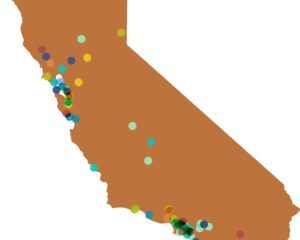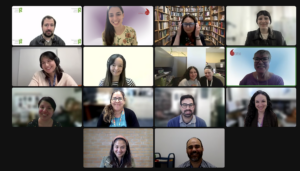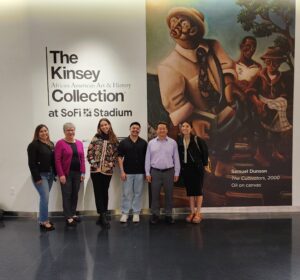By Natalia Molina, author, Professor of History and Urban Studies at UC San Diego, and California Humanities Board Member
What is best about the Humanities and the special contribution it can make to civic participation was on display on a recent panel on immigration at our California Humanities board meeting, held in San Diego. Our first speaker was Lalo Alcaraz, a Chicano artist, cartoonist, author, and social commentator best known for his nationally-syndicated, politically-themed Latino daily comic strip, “La Cucaracha” and now writing for the new Fox cartoon TV series Bordertown. Alcaraz was joined by architect and UC San Diego professor Teddy Cruz, who creates programs that foster collaboration between UCSD and diverse communities throughout the region. He works with UCSD Professor of Political Science Fonna Forman to design and direct the Civic Innovations Lab for the San Diego Mayor’s Office, and established and co-directs with Forman the UC San Diego/Blum Cross-Border Initiative, a project around regional poverty research and practice.
While on the surface, their methods and approaches to the issues might not seem in conversation (one a cartoonist and one an architect), they both provide the intellectual resources to help us think through pressing issues. Central to both their work is an attention to often overlooked communities, especially immigrants, and telling their stories in ways that reveal to us both the limits and possibilities of democracy and civil discourse.
At the heart of our conversation was this question: how can the humanities play a role in difficult conversations around immigration today (or deepen the conversation on immigration)? To answer this question they both use the U.S.-Mexico border as ground zero. They also turn to and produce cultural products, be they in the form of border performances as Cruz has done on the US-Mexico border, or the TV series Bordertown to serve as a laboratory to investigate the intersections of American identity and our national narratives on immigration. Conversations on immigration are so heated because it is where demographic and economic issues collide head on with long-held American maxims such as the possibilities of assimilation and that we are a nation of immigrants. Thus, both see the border as a laboratory for re-thinking citizenship, and not just geographical borders but metaphorical as well, such as social, cultural, economic, and how they tend to distinguish us as more different than the same from one another.
Perhaps most importantly both came back to one of the most often cited examples as to why the humanities matter. They offer a vehicle, be it through a novel, historical case study, documentary, to grok some insight into someone else’s experience, making it less foreign, less distant, less frightening, which thus helps us transcend a type of border or wall. This connection is the first step in meaningful dialogue one in which we are willing to listen as well as communicate our ideas, the keystone of democracy.
Natalia Molina
Professor of History and Urban Studies
University of California, San Diego
Author of How Race Is Made in America: Immigration, Citizenship, and the Historical Power of Racial Scripts
http://nataliamolinaphd.com





